Cleopatra died soon after allowing herself to get bitten by an Egyptian cobra. But history is sometimes written by those that weren’t there to witness it.
So, what do we know about how Cleopatra died? What are its accounts by some famous historians?
The method of her death is as captivating as the historically influential figure she remains to this day.
Table of Contents
How Did Cleopatra Die?
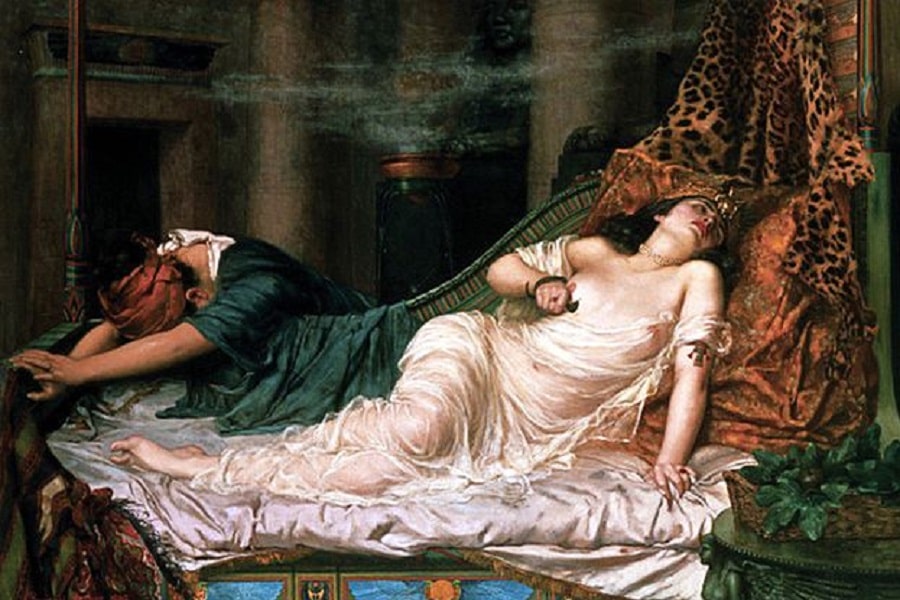
It is widely believed that Cleopatra died by allowing herself to get bitten by an Egyptian cobra known as an “asp.” The asp is said to have been brought to her in a basket full of leaves and figs. In some accounts, it is said that she ingested poison, or simply used a needle to puncture her skin and inject hemlock inside her veins.
According to Cassius Dio, this was evident from the puncture wounds near her wrists. It implied that she had, in fact, injected poison into her veins regardless of whatever vessel she had used for the deed.
Regardless of how the story goes, suicide is the prime cause behind her death.
However, there’s more to the circumstances revolving around the events leading up to her death, as countless other theories stay on standby.
The ancient Egyptian timeline is full of drama, and the twilight of this mighty civilization is no stranger to it.
READ MORE: Ancient Civilizations Timeline: The Complete List from Aboriginals to Incans
Cleopatra lived a life so iconic that one might compare her lore to those of Egyptian gods and goddesses, but even that wouldn’t really do it justice.
Cleopatra is a woman who needs no introduction. She’s the seductress of the Nile, the Last Queen of Egypt, and the ultimate multi-tasker (she could rule a kingdom while bathing in milk, no less!).
Theories of Cleopatra’s Death: How Did Cleopatra Die?
There are a couple of theories revolving around how Cleopatra died and did Cleopatra actually commit suicide.
THEORY#1: Bitten by the Snake
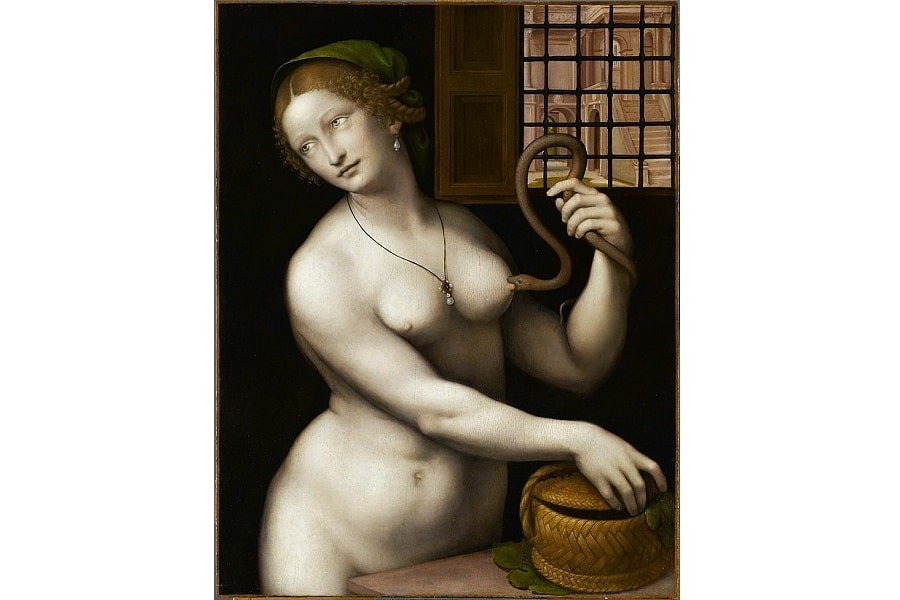
The most popular theory about the death of Cleopatra is that she committed suicide using an Egyptian cobra (Asp).
Now, while snakes are no strangers to Egypt, one must wonder – how on earth did she get her hands on such a fearsome serpent?
Contemporary texts and research suggest Cleopatra was fascinated with venomous creatures and even conducted experiments with various toxins.
Possibly, she had access to an Egyptian cobra through her connections with snake handlers or animal trainers in her royal court.
THEORY#2: Venom and Vexation

So let’s say Cleopatra did manage to procure a deadly asp for her grand finale.
How exactly did the poison work its magic? The venom of an Egyptian cobra can cause paralysis, respiratory failure, and eventually death.
Yet, in Cleopatra’s case, there were no signs of struggle or pain. This begs the question – was the queen immune to the venom, or was the snake simply the most considerate assassin in history?
While it’s impossible to know for sure, Cleopatra’s knowledge of poisons may have allowed her to administer the venom in a way that minimized her suffering.
Alternatively, it’s possible that her death was more peaceful because she had prepared herself mentally and physically for the end. After all, she had just lost the love of her life.
THEORY#3: A Deadly Draught
Another theory is that Cleopatra died from ingesting a lethal poison voluntarily or as a result of foul play.
One such poison is hemlock, which was readily available in the ancient world. Now, while hemlock might have been a fashionable choice for Greek famous philosophers like Socrates, it seems a bit too pedestrian for the glamorous queen of Egypt.
Other candidates for Cleopatra’s deadly draught include aconite and opium, both of which were known in the ancient world for their powerful and lethal properties.
Cleopatra’s extensive knowledge of poisons might have allowed her to create a potent concoction, ensuring a swift and relatively painless death.
THEORY#4: Concoction Conundrum

Cleopatra might’ve been known for her love of cosmetics, and it’s possible that she may have turned to her beauty cabinet for a deadly solution.
Ancient Egyptian cosmetics contained various toxic ingredients, such as lead and mercury, which could have been lethal if ingested. Cleopatra’s intelligence and experience with toxins would likely have made her aware of the dangers posed by these substances.
Therefore, it seems more plausible that she would have chosen an effective and relatively painless poison rather than risking an agonizing death by ingesting a toxic ointment.
THEORY#5 The Political Plot
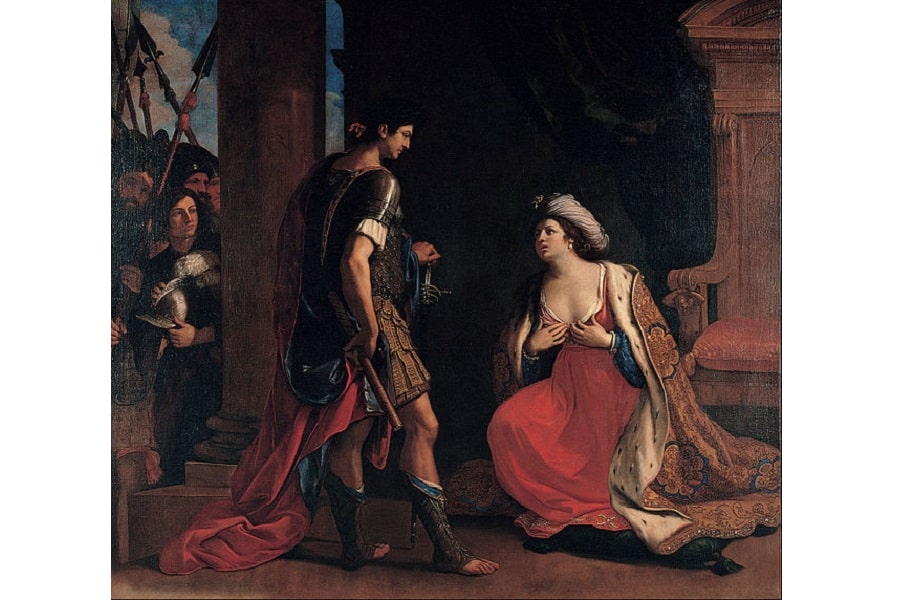
This theory could well be the most realistic of the bunch as it might be highly unlikely Cleopatra died from snakebite.
As we know, Cleopatra and Mark Antony were pitted against Octavian in a battle for power.
Intriguingly, some ancient sources suggest that Octavian not only orchestrated Cleopatra’s demise but also manipulated events to make her death appear as a suicide.
This would have allowed him to claim Egypt without appearing to be a ruthless conqueror. In a political climate ripe with deception and betrayal, could Octavian have been the mastermind behind Cleopatra’s untimely end?
While it’s impossible to know, the idea of Octavian manipulating events to his advantage is not entirely implausible, given his well-documented cunning and ambition.
However, when murder is ruled out, suicide as a cause behind the death of Cleopatra is widely accepted by both Roman and contemporary historians.
Therefore, the most plausible theory behind how Cleopatra VII died is this:
Death by suicide from toxic substances (either via an Egyptian cobra, ointment, or needle). Hence, she took her own life.
Cleopatra’s Age at Death
So, how old was Cleopatra when she died?
Cleopatra was born in 69 BCE and died in 30 BCE, making her 39 years old at the time of her death. The exact date of her death was 10th August.
Cleopatra’s Last Words
What were Cleopatra’s last words, though?
Unfortunately, we do not have a definitive account of Cleopatra’s final moments or any record of her last words. However, Livy, a Roman historian, recounts her last few words being:
“I will not be at the front of a triumph.”
This refers to Cleopatra’s repulsion at the thought of her being forced to parade in a Roman triumphal procession and get insulted by the general public.
Of course, Octavian made no promises to Cleopatra, which could’ve been one of the prime reasons she eventually chose taking her own life as the only way out.
Why the Snake?

Why did Cleopatra kill herself, and why did she choose a snake to do the job?
As a proud and powerful ruler, Cleopatra would have found the prospect of being paraded as a captive through the streets of Rome by Octavian utterly humiliating. By choosing suicide, she could maintain some semblance of control over her destiny.
Using a venomous snake may have had symbolic significance, as snakes were associated with the Egyptian gods and goddesses, including the goddess Isis, the deity of protection and motherhood, whom Cleopatra was believed to embody.
The Historians’ Dilemma and Unreliable Narrators
As we navigate the various theories surrounding Cleopatra’s death, we must remember that most of our sources are unreliable.
Ancient Roman historians were known for their love of dramatic narratives and embellishments, often blurring the line between fact and fiction.
For example, the story of Cleopatra’s death by snakebite comes primarily from the Roman historian Plutarch, who wrote about the event over a century after it occurred. To make matters worse, Plutarch wrote his account based on Olympos, Cleopatra’s physician, so facts might have gotten lost along the way.
It’s entirely possible that Plutarch’s account was influenced by earlier works and his desire to create a compelling story. For instance, it is said that the asp that killed Cleopatra was brought to her in a small basket filled with leaves, followed by a really poetic description of how the scene might have looked like.
Plutarch’s Account
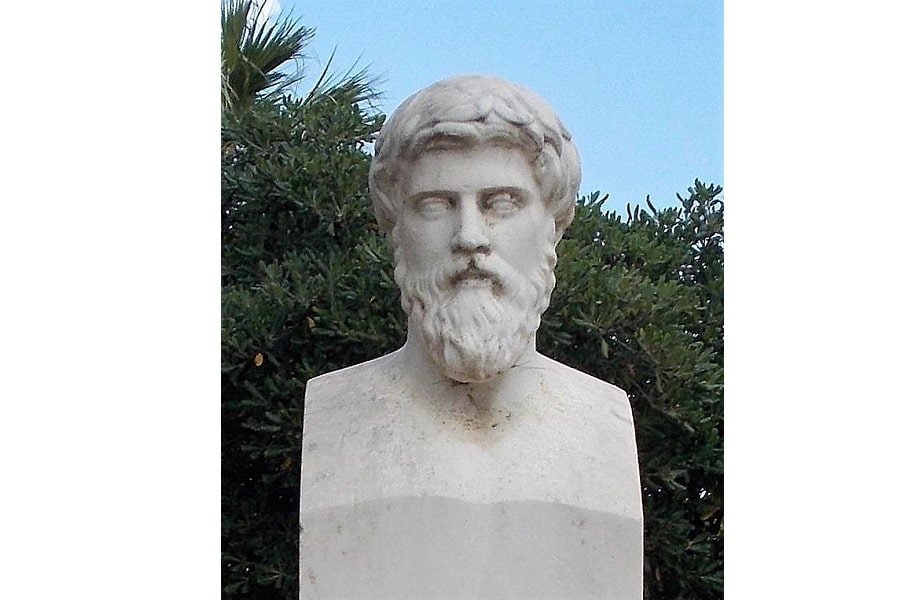
Plutarch’s account of Cleopatra’s demise describes her fleeing to her tomb after hearing of Antony’s defeat in Alexandria. As mentioned before, most of his account is structured from the words of Cleopatra’s physician, Olympos.
As a result, he acknowledges that the cause of her death remains shrouded in uncertainty.
Plutarch states that when her tomb was opened, Cleopatra was found dead on a golden couch with her two women, Iras and Charmion, dying beside her. The asp was not found in the chamber, but some claimed to see traces of it near the sea.
Caesar admired Cleopatra’s courageous spirit, ordering her body to be buried with Antony in a regal manner, and her women to receive honorable interments.
Cassius Dio’s Account

Cassius Dio’s account describes Cleopatra’s attempts to gain Octavian’s favor, offering him money and promising to kill Antony.
However, Octavian gave no answer to Antony and instead sent threats and promises of love to Cleopatra. After taking Alexandria, Antony allegedly stabbed himself in the stomach and died in Cleopatra’s arms in her tomb. Cleopatra then convinced Octavian she would travel to Rome with him but planned her own death instead.
Dressed in her finest clothes and symbols of royalty, she lay on a golden couch and took her own life.
Livy’s Account
According to Livy, after Alexandria and learning that Cleopatra took her own life, Caesar returned to the city to celebrate three triumphs. Plutarch expands on this, detailing Cleopatra’s ritualistic preparations for her suicide, which involved bathing and eating a meal of figs brought in a basket.
The Events Leading to Cleopatra’s Death
The Julius Caesar Connection
After she was cast out from Egypt by her own brother, Cleopatra’s fortunes changed when she allied with the Roman general Julius Caesar
In 48 BCE, she smuggled herself into Caesar’s presence, wrapped in a carpet, and the two quickly became lovers. With Caesar’s support, Cleopatra regained her throne and consolidated power after defeating her brother Ptolemy XIII in the Nile.
In 47 BCE, she gave birth to a son, Caesarion, whom she claimed was fathered by Caesar.
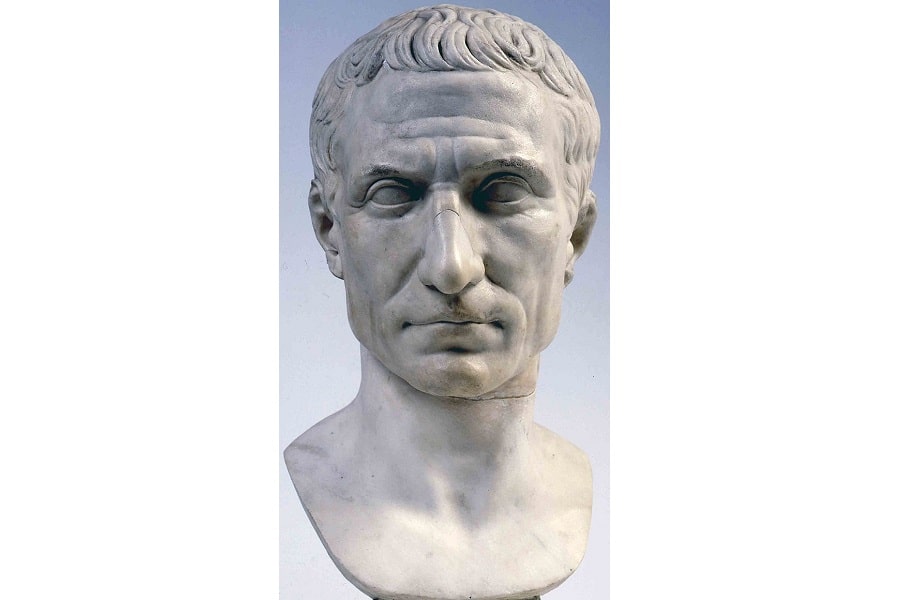
The Mark Antony Connection
After Julius Caesar’s assassination in 44 BCE, Cleopatra sought to strengthen her position by aligning herself with the Roman general, Mark Antony.
The two became lovers, and their passionate affair would become the stuff of legend. Antony eventually divorced his wife, Octavia (remember the name). He married Cleopatra in 36 BCE, even though he was already married.
Together, they had three children: Alexander Helios, Cleopatra Selene II, and Ptolemy Philadelphus.
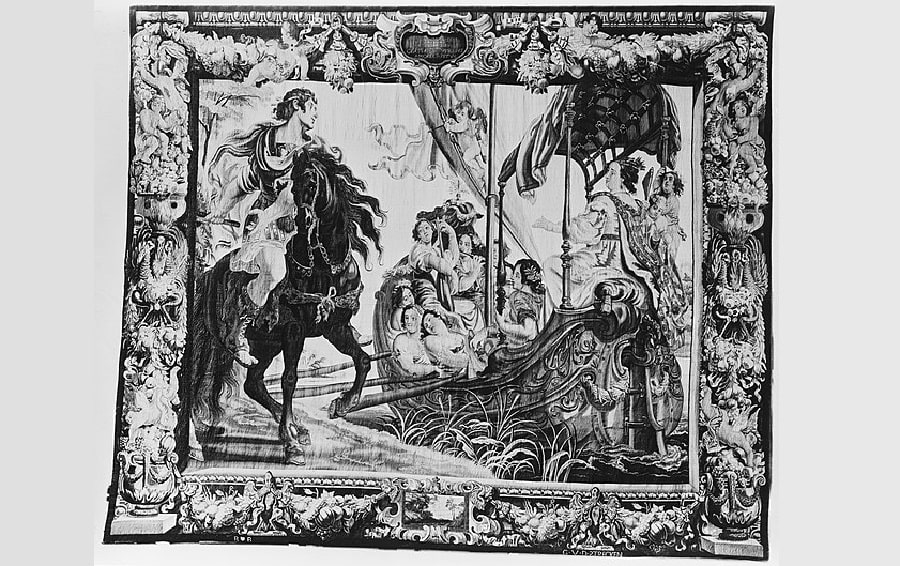
A Queen at War
Cleopatra’s reign was marked by significant political and military struggles as she sought to protect Egypt from the expanding Roman Empire and maintain her own power.
In a nutshell, she faced numerous challenges, including rebellions, foreign invasions, and internal power struggles. Cleopatra allied herself with influential Roman leaders like Julius Caesar and Mark Antony to preserve Egypt’s independence and her authority.
However, these alliances ultimately proved to be her undoing. As tensions between Rome and Egypt escalated, Cleopatra’s relationship with Mark Antony became a focal point of political controversy, culminating in the Battle of Actium in 31 BCE led by Octavian.
In this decisive naval battle, the forces of Octavian, who would turn out to be the future Roman Emperor Augustus, defeated the combined forces of Mark Antony and Cleopatra.
This crushing defeat signaled the beginning of the end for Cleopatra and her once-mighty empire.
The Fall of Mark Antony
Following the Battle of Actium, Cleopatra’s fortunes began to unravel.
Mark Antony, her lover and ally, committed suicide by stabbing himself after receiving false news that Cleopatra was dead. Mark Antony had decided to join her in death as the apparent thought of Cleopatra’s suicide would haunt him forever.
As Antony fell, Cleopatra, on the other hand, was cornered like a mouse hidden away in a tomb with her attendants and an accumulation of her vast wealth.
In many texts, Antony’s body was believed to be brought to Cleopatra’s arms, where he whispered to her that he had died honorable and eventually passed away.
Facing the prospect of being captured and paraded through the streets of Rome or Alexandria, Cleopatra decided to take matters into her own hands. In these turbulent times, the life of this legendary queen came to its dramatic and tragic conclusion.
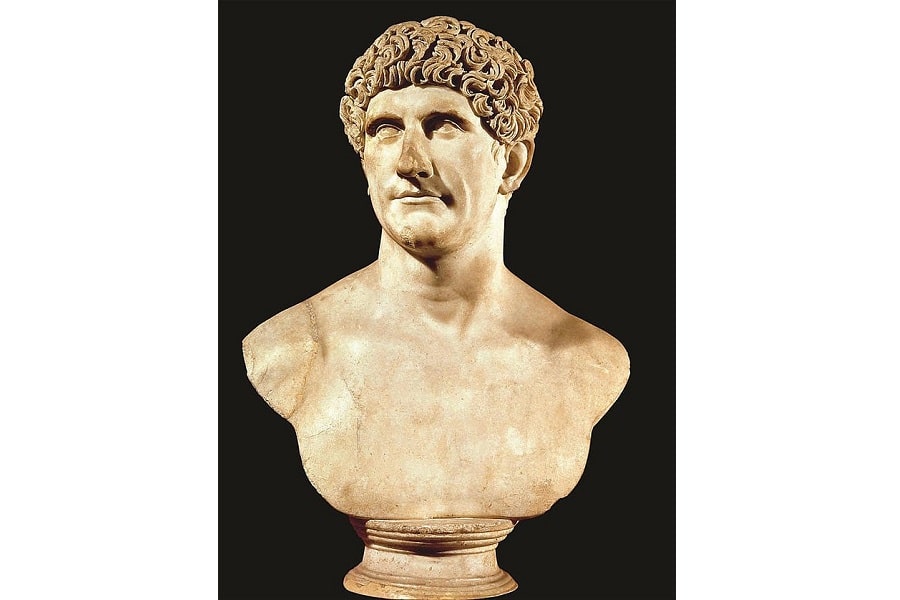
Conclusion
Cleopatra’s death remains shrouded in mystery, lost to the pens of ancient writers, with theories ranging from venomous snakes to political plots.
While the exact and detailed circumstances of what went down that day in Alexandria may never be known, her legacy symbolizes female power and resilience.
READ MORE: The Lighthouse of Alexandria: One of the Seven Wonders
Her life and death have captivated audiences for centuries. Her story inspires new generations as they explore ancient Egypt’s complex and intriguing world.
Cleopatra will forever be remembered as one of history’s most enigmatic and fascinating figures, leaving us with tantalizing questions and a story that continues to captivate our imagination.
In the end, the curious case of Cleopatra’s demise reminds us that even the most powerful cannot escape fate’s clutches and the eventual progression of a world ridden by war. As we continue to explore the rich tapestry of human history, we must remember that while the answers to our questions may not always be clear, the quest for knowledge is a journey worth undertaking.
References:
http://www.perseus.tufts.edu/hopper/text?doc=Perseus%3Atext%3A2008.01.0007%3Achapter%3D86
https://www.sciencedirect.com/science/article/pii/S2214750021000457
https://journals.sagepub.com/doi/abs/10.1177/030751336104700113?journalCode=egaa
https://www.ajol.info/index.php/actat/article/view/52563
https://www.jstor.org/stable/2868173
Stacy Schiff, “Cleopatra: A Life” (2010)
Joann Fletcher, “Cleopatra the Great: The Woman Behind the Legend” (2008)
Duane W. Roller, “Cleopatra: A Biography” (2010)